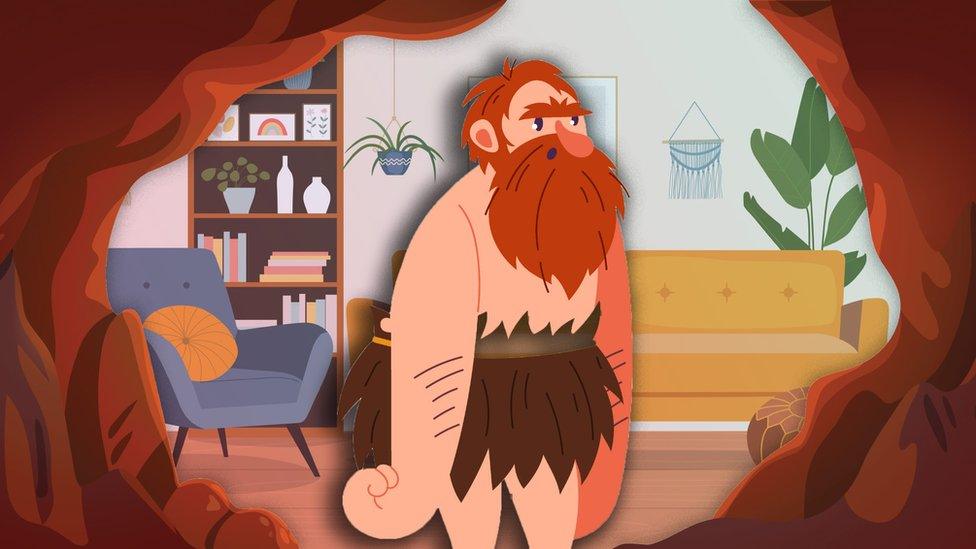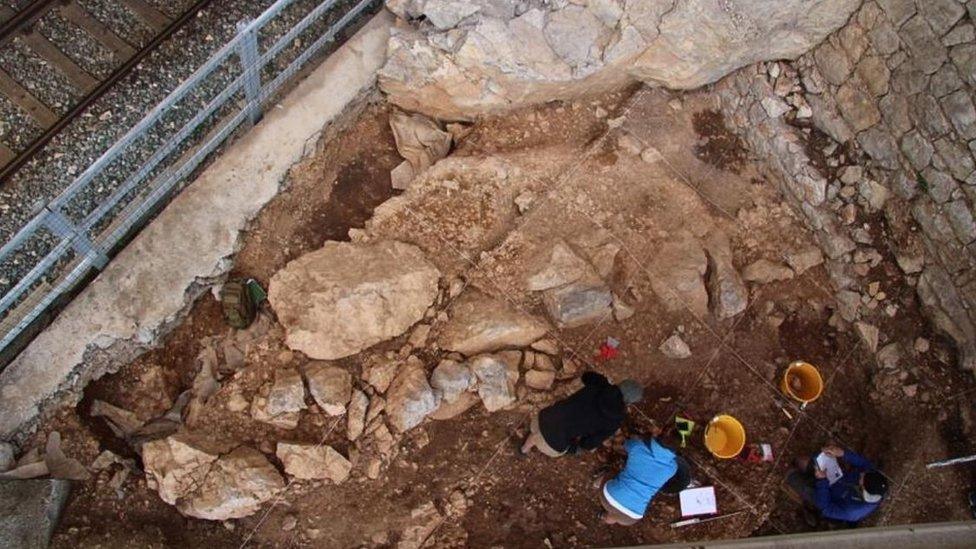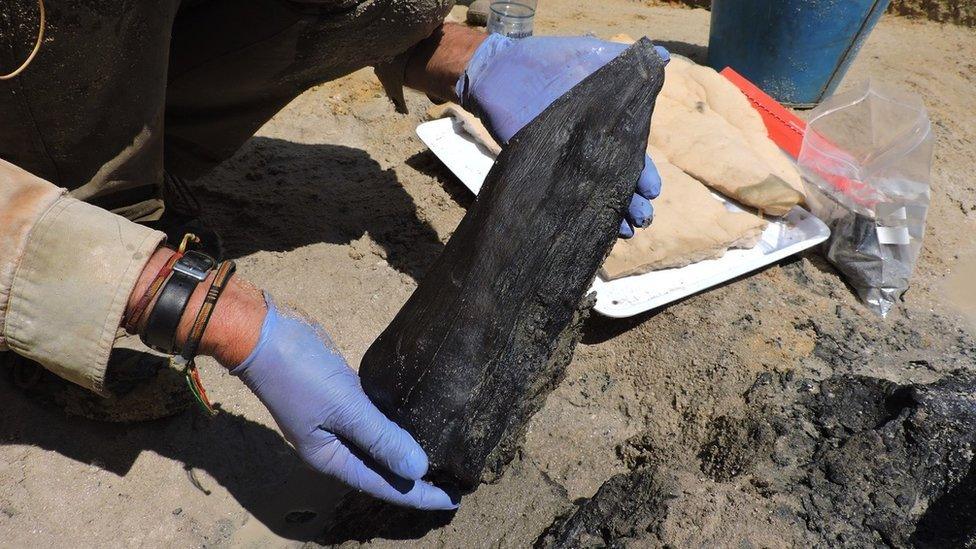Neanderthals were more like humans than we thought
- Published
- comments

Your bedroom might be messy, but there's probably some logic behind how everything is laid out and it looks like Neanderthals arranged their belongings in a similar way.
A new study has revealed Neanderthals - the ancient, and now extinct, relative of modern humans - organised their living spaces a bit like modern humans do.
Previously, Neanderthals had been thought to be primitive (live in a simple way), and not as advanced as Homo Sapiens (humans), but this research suggests otherwise.
Researchers say the findings show Neanderthals were just as good as Homo Sapiens at organising their space.

Researchers analysed artefacts and features at the Riparo Bombrini site in northwestern Italy
Researchers looked at sites of both Neanderthals and Homo sapiens in northwest Italy and compared the how things like stone tools and animal bones were spread around the space.
They found Neanderthals organised their living space according to the different tasks they would carry out there and to their needs.
Both Neanderthals and Homo sapiens had a specific spot for the inner hearth - like a fireplace - as well as a refuse pit which is like a bin.
They also both planned the space according to how long they'd be staying there, with how many people and what activities they wanted to do there.
Neanderthals lived across Europe and south west and central Asia between about 400,000 to 40,000 years ago.

There were also some differences between them though.
The Neanderthal site had fewer clusters of artefacts and didn't use the space regularly, just from time to time.
Homo sapiens switched between using the space for long periods of time and short periods of time and had more artefacts.
The study's co-author Amélie Vallerand from the University of Montreal said: "This is yet another study indicating that Neanderthals were more 'human' than is generally assumed."
- Published8 January 2023

- Published23 February 2024

- Published26 September 2023

